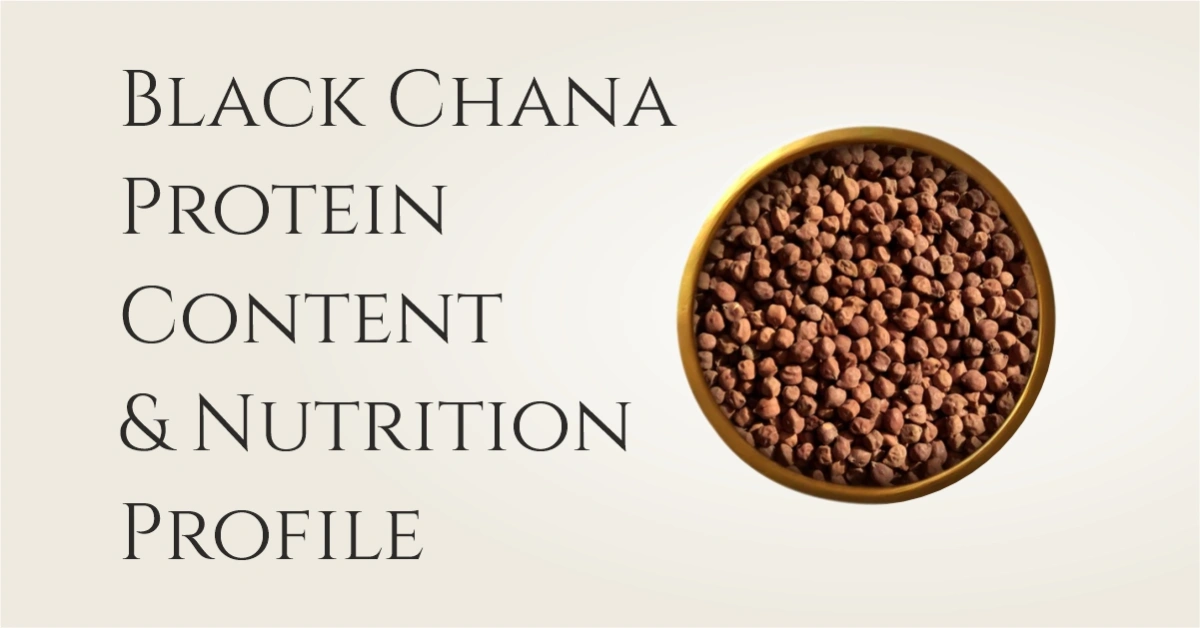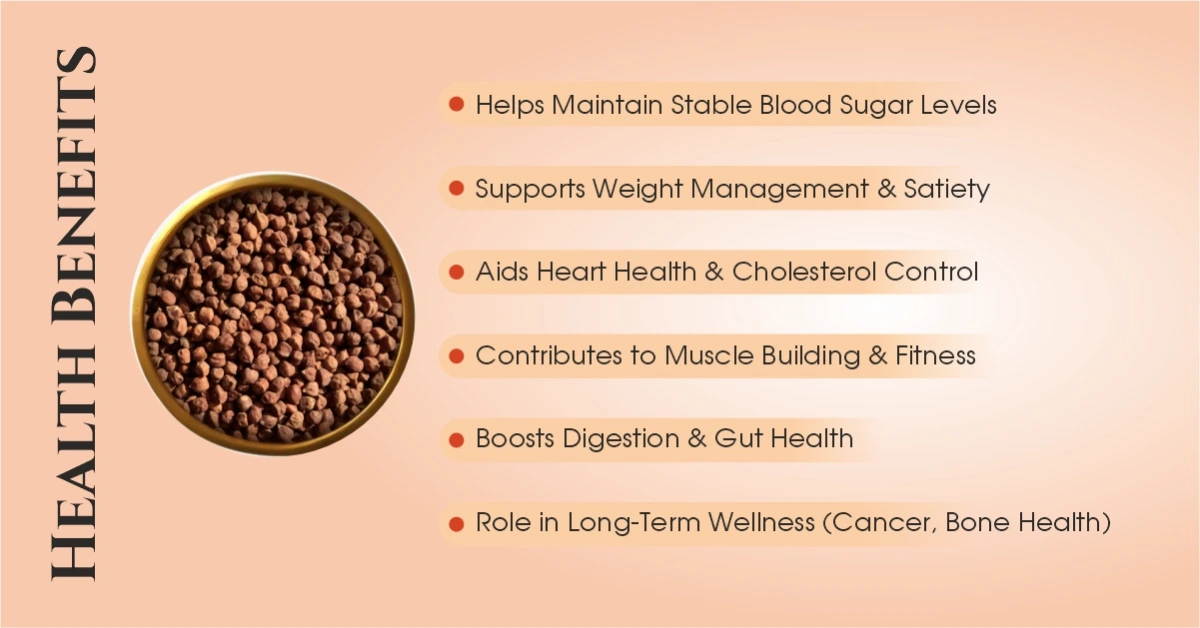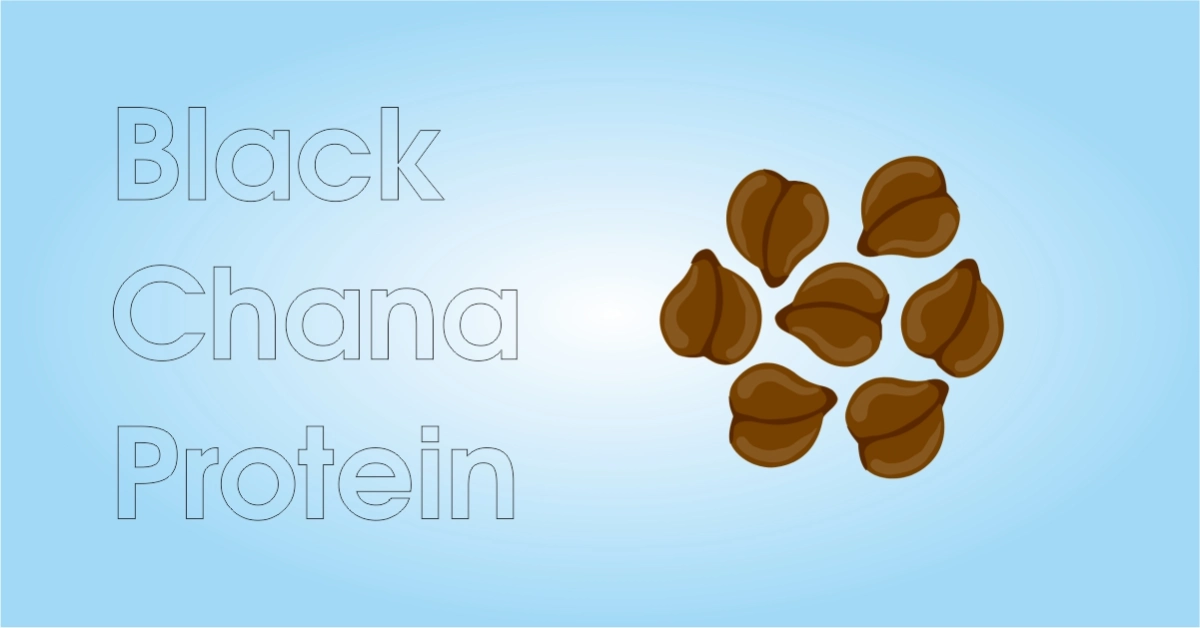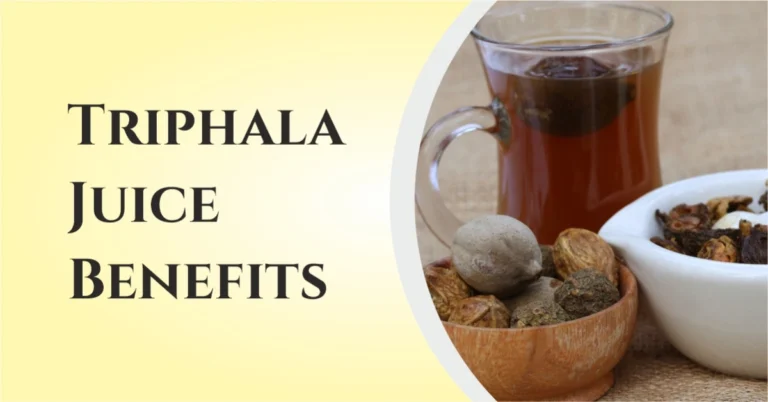Black Chana Protein – Nutrition, Benefits, and Safe Daily Use
Black chana, or kala chana, is a small, dark-brown chickpea long used in Indian kitchens. It stands out because it’s rich in plant-based protein, along with fiber, complex carbs, and minerals like iron, magnesium, and potassium.
or anyone on a vegetarian or vegan diet, black chana is an affordable way to meet daily protein needs. Its protein–fiber combo helps build and maintain muscles, supports metabolism, and keeps you full longer, which can aid in weight control and steady blood sugar levels.
It’s also highly versatile in cooking—you can soak and sprout it for salads, boil it for curries, or roast it for snacks. These methods not only make it tasty but also improve protein absorption.
Today, black chana is valued as a trusted plant-based protein source for fitness, weight management, and overall wellness—making it an easy, natural choice for anyone looking to boost their protein intake.
Black Chana Protein Content & Nutrition Profile

Protein Content in Different Forms of Black Chana
Black chana is known for its high plant-based protein, but the amount you get depends on how it is prepared. In its raw form, 100 g of black chana generally provides around 18–20 g of protein. When soaked overnight, the moisture increases and the protein per 100 g drops slightly to about 15–16 g, but its digestibility improves. Roasted black chana is more concentrated because it loses water during roasting, so the protein content per 100 g can rise to about 22–23 g.
This difference in numbers is important because most people eat soaked or roasted chana rather than raw. What truly matters is not just the number but how well the body can use that protein, which leads to the role of preparation methods.
Complete Nutrition per 100 g of Black Chana
Beyond protein, black chana is a nutrient-dense pulse. On average, 100 g of raw black chana provides about 360–370 kcal of energy, 60–62 g of carbohydrates, 17–18 g of protein, and 4–5 g of fat. It is also rich in dietary fiber (11–12 g), which supports digestion and satiety.
Black chana supplies iron, magnesium, phosphorus, potassium, zinc, and B-vitamins like folate and B6, all essential for energy metabolism and red blood cell production. It also contains small amounts of calcium and antioxidants such as polyphenols, which contribute to its long-standing use in traditional diets.
Soaked or sprouted chana retains most of these nutrients while becoming slightly lower in calories per 100 g due to added water content. Roasted chana, on the other hand, delivers a higher calorie and protein concentration because of reduced moisture.
How Preparation Affects Protein Quality
The way you prepare black chana affects not just the numbers but also the quality and bioavailability of its protein.
- Soaking: Reduces anti-nutrients like phytic acid and tannins, which can block absorption of protein and minerals. This makes the protein more digestible and gentle on the stomach.
- Sprouting: Activates natural enzymes that break down complex compounds, improving amino acid availability and increasing certain vitamins such as vitamin C.
- Boiling or Pressure-Cooking: Softens the seeds, slightly lowering the protein percentage by weight but improving digestibility for most people.
- Roasting: Concentrates protein and energy because moisture evaporates, but very high heat for too long can reduce the availability of certain amino acids.
Understanding these changes helps you choose the preparation that fits your needs—whether it’s sprouted for easier digestion, roasted for a protein-dense snack, or cooked for balanced meals.
Health Benefits of Black Chana Protein

Helps Maintain Stable Blood Sugar Levels
Black chana’s protein and fiber slow down how fast sugar enters the blood. This steadier release can help reduce sugar spikes after meals and support better insulin response over time. Its low–moderate glycemic index also makes it a good choice for people managing blood sugar.
Supports Weight Management & Satiety
The protein–fiber combo in black chana helps you feel full longer and reduces mid-meal cravings. Swapping fried or sugary snacks with a serving of roasted or boiled chana can cut calories while keeping you satisfied. This steady intake helps with weight control and muscle preservation during weight loss.
Aids Heart Health & Cholesterol Control
Black chana’s soluble fiber and legume protein may help lower LDL (“bad”) cholesterol and support healthier triglyceride levels when eaten with whole grains, fruits, and vegetables. Its potassium and magnesium help with blood-pressure balance, while plant polyphenols offer extra antioxidant support.
Contributes to Muscle Building & Fitness
The plant protein in black chana supports muscle repair and recovery after exercise. Paired with grains like rice or roti, it gives a better amino acid balance for muscle growth. Having it in meals across the day—like in breakfast upma, lunch salad, or dinner curry—helps you meet protein needs for training.
Boosts Digestion & Gut Health
Black chana’s prebiotic fiber feeds good gut bacteria and can improve digestion over time. It also supports better stool regularity. For those new to legumes, starting with small servings and using soaking or sprouting helps reduce gas and bloating.
Role in Long-Term Wellness (Cancer, Bone Health)
Regular intake of legumes such as black chana is linked in studies to a lower risk of chronic illnesses, thanks to fiber, antioxidants, and nutrient density. It also supplies magnesium, phosphorus, and some calcium, which support strong bones when combined with adequate vitamin D and protein. These are associations, not cures, and work as part of a long-term balanced diet and lifestyle.
Daily Dosage and Safe Intake Guidelines
Recommended Daily Intake by Age, Gender, and Activity
How much black chana you need depends on your age, gender, and lifestyle. The goal is to meet daily protein needs without overloading digestion.
| Group | Daily Black Chana | Protein Supplied |
|---|---|---|
| Children (6–12 yrs) | 20–30 g | 3.5–5.5 g |
| Teens (13–18 yrs) | 30–40 g | 5.5–7 g |
| Adult Women (sedentary) | 30–40 g | 5.5–7 g |
| Adult Women (active) | 40–50 g | 7–9 g |
| Adult Men (sedentary) | 35–50 g | 6.5–9 g |
| Adult Men (active / gym-goers) | 50–70 g | 9–12 g |
| Seniors (above 60 yrs) | 25–35 g | 4.5–6.5 g |
Targeted Benefits of Black Chana Protein for Men and Women
For Men – Muscle Growth, Energy, Testosterone Support
- Muscle Development: The high protein in black chana supports muscle repair and growth, especially when combined with strength training.
- Energy for Workouts: Its mix of complex carbs and protein provides steady energy release, reducing mid-workout fatigue.
- Weight Management for Active Men: Helps maintain lean mass while cutting excess body fat when paired with a balanced routine.
- Testosterone Support: Nutrients like zinc and magnesium in black chana play a role in supporting normal testosterone production, which is important for muscle health and vitality.
- Improved Recovery: Regular inclusion in meals helps reduce muscle soreness and recovery time after intense training.
For Women – Hormonal Balance, Bone Strength, Weight Control
- Hormonal Balance: Plant protein combined with fiber helps stabilize blood sugar levels, which may support hormone balance during reproductive years and menopause.
- Bone Health: Provides magnesium, phosphorus, and some calcium, which support strong bones and reduce the risk of age-related bone loss when combined with vitamin D and other nutrients.
- Weight Management: The protein–fiber combo promotes satiety, helping manage weight without compromising muscle mass during calorie restriction.
- Iron Support: Offers a plant-based source of non-heme iron, useful for women with higher iron needs, especially during menstruation .
- Digestive Health: Its fiber content helps maintain gut regularity, which indirectly supports overall hormonal and metabolic health.
Consumption Methods
Soaked or Boiled Black Chana for Everyday Meals
- Soaked overnight: Rinse raw black chana and soak in water for 8–10 hours. It becomes softer, easier to digest, and better for sprouting.
- Boiled: Cook soaked chana in a pressure cooker or pot until soft. Use it in curries, stews, soups, or as a side dish with rice or roti.
- Meal tip: Add a small bowl (about ½ cup cooked chana) to lunch or dinner for a steady source of protein and fiber.
Roasted or Sprouted Chana as Snacks
- Roasted: Dry-roast chana on low flame or buy ready-roasted varieties. It’s a crunchy, high-protein snack with no oil.
- Sprouted: Drain soaked chana, keep it in a warm place for 24–36 hours to sprout. Sprouting improves vitamin C content and protein digestibility.
- Snack tip: Mix roasted or sprouted chana with chopped onions, tomatoes, lemon, and a pinch of salt for a quick and healthy mid-meal option.
Black Chana Salads, Chaats, and Stir-fries
- Salads: Combine boiled chana with cucumber, tomatoes, onions, herbs, lemon juice, and a dash of black salt.
- Chaats: Toss cooked chana with green chutney, tamarind chutney, spices, and puffed rice for a light evening snack.
- Stir-fries: Sauté boiled chana with diced veggies, garlic, and a little oil for a warm, protein-rich side dish.
- Tip: These recipes keep meals colorful, filling, and beginner-friendly, while adding variety to daily eating.
Safety, Side Effects & Precautions
Allergen Concerns & Who Should Limit Intake
People with legume or peanut allergies should avoid black chana. Those with IBS or sensitive digestion may feel bloated or uncomfortable due to its natural sugars. Individuals with kidney issues or on a potassium-restricted diet should limit intake. Gout patients should eat it in moderation. For infants, always mash or puree to prevent choking.
Common Digestive Issues (Gas, Bloating, Anti-Nutrients)
Black chana can cause gas and bloating, especially for beginners or when eaten in large amounts. This is due to its natural fermentable sugars. It also has phytic acid and tannins, which can reduce mineral absorption if not soaked and cooked well. Starting with smaller servings helps the gut adjust.
Tips to Improve Digestion & Protein Absorption
Soak overnight and discard the water to reduce gas-causing compounds. Sprouting enhances digestibility and vitamins. Proper cooking, like pressure-cooking, further reduces gut-irritating compounds. Using spices such as hing, cumin, or ginger can ease bloating. Pair with vitamin-C-rich foods like lemon or tomatoes to improve iron absorption. Begin with small portions (¼–½ cup cooked) and increase slowly as tolerance improves.
FAQs on Black Chana Protein
What is the protein content in 100 g of black chana?
Raw black chana has about 18–20 g of protein per 100 g. Soaked chana has slightly less (15–16 g) due to water absorption, while roasted chana has more (22–23 g) because of lower moisture.
What are the main health benefits of black chana protein?
It supports muscle repair, weight management, stable blood sugar, heart health, and digestion. Its fiber and plant-based protein make it a valuable daily food.
Can black chana protein help with weight loss and muscle gain?
Yes. The protein–fiber combo keeps you full longer, which helps reduce extra snacking, and the plant protein supports muscle growth and recovery when combined with exercise.
How much black chana should I eat daily for protein needs?
Most healthy adults can aim for 30–50 g of dry chana per day (about ½–1 cup cooked), adjusting based on activity level, age, and other protein sources.
Is black chana protein suitable for vegetarians and vegans?
Yes. It’s a completely plant-based protein source and works well in vegetarian and vegan diets when combined with grains for a complete amino acid profile.
Does soaking or sprouting affect protein absorption?
Yes. Soaking and sprouting reduce anti-nutrients like phytates and improve the digestibility of protein and minerals.
What’s the best way to consume it for maximum benefit?
Use soaked and cooked chana in curries, salads, or stir-fries, or enjoy it roasted or sprouted as snacks. Pair with vitamin-C-rich foods (like lemon or tomatoes) to improve iron absorption.
Are there side effects or digestive concerns?
Some people may experience gas or bloating, especially if new to legumes. Soaking, sprouting, cooking thoroughly, and starting with small portions can help.
Can it be used for diabetes-friendly diets?
Yes. Its low–moderate glycemic index and high fiber can help manage post-meal blood sugar, but portion size should be monitored.
How does black chana protein compare to soy or whey?
Black chana has less total protein and a slightly lower amino acid profile than soy or whey but is more affordable, fiber-rich, and easier for everyday meals. Pairing it with grains improves overall protein quality.







